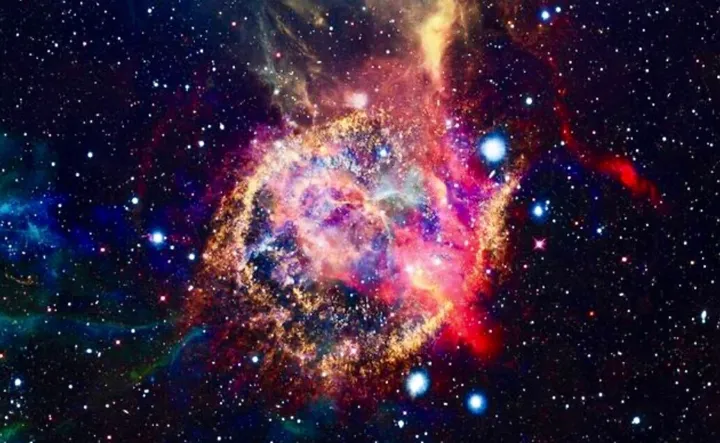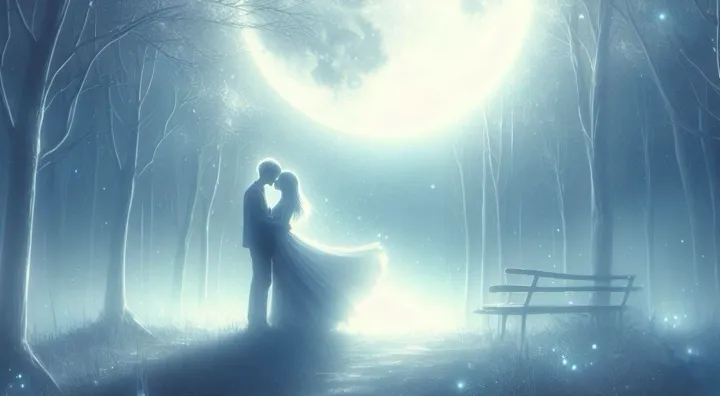How the Universe Works - Supernovas
In the vast expanse of the cosmos, stars are born from the gravitational collapse of massive clouds of gas and dust. These stellar nurseries give birth to the luminous giants that light up the night sky, and over billions of years, they play a crucial role in shaping the universe.
The process begins when a region of space becomes particularly dense, with enough matter to overcome the outward pressure from the intense heat and radiation. Gravity takes over, pulling the gas and dust particles together, forming a protostar. As the protostar continues to gather material, its core heats up, and nuclear fusion ignites, turning hydrogen into helium in a brilliant burst of energy. This marks the birth of a star.
For most of a star's life, it fuses hydrogen into helium through a delicate balance of gravitational forces and radiation pressure, producing the light and heat that we see from afar. These stars are responsible for generating many of the elements in the periodic table through their nuclear fusion processes.
As the star ages, it eventually exhausts its hydrogen fuel. Depending on its mass, it will go through a series of transformations. A relatively small star like our sun will swell into a red giant, then expel its outer layers in a colorful display of gas and dust known as a planetary nebula. What remains is a small, dense core, called a white dwarf, composed of carbon and oxygen.
But for the massive stars, those several times the mass of our sun, the journey takes a much more explosive turn. With the intense pressure and temperature at the core, heavier elements like carbon, oxygen, and iron begin to form through successive rounds of nuclear fusion. This process continues until the core reaches a critical mass, causing a cataclysmic event known as a supernova.
In a supernova explosion, the core of the star collapses in a fraction of a second, creating a burst of energy that can outshine an entire galaxy. This violent release of energy forges even heavier elements, including gold, silver, and uranium. These elements are then scattered into space, enriching the surrounding interstellar medium with an abundance of new materials.
Some supernovae give rise to an even more astonishing phenomenon called a hypernova. These are exceptionally rare and even more powerful than regular supernovae. Hypernovae release an unimaginable amount of energy, often over a hundred times that of a supernova. Their colossal explosions result in the production of elements like plutonium and curium, which play vital roles in the formation of the universe's chemical diversity.
As these newly formed elements are dispersed into the cosmos, they become the raw materials for the creation of planets, moons, and, eventually, life itself. Every atom in your body, every mineral on Earth, and every celestial body in the universe is, in part, the product of these explosive cosmic events.
In this way, the birth, life, and death of stars are intimately connected with the creation of the elements that make up everything we see and touch. We are, quite literally, stardust, and our existence is a testament to the wondrous cosmic processes that have unfolded over billions of years.
© Metta_Zen
The process begins when a region of space becomes particularly dense, with enough matter to overcome the outward pressure from the intense heat and radiation. Gravity takes over, pulling the gas and dust particles together, forming a protostar. As the protostar continues to gather material, its core heats up, and nuclear fusion ignites, turning hydrogen into helium in a brilliant burst of energy. This marks the birth of a star.
For most of a star's life, it fuses hydrogen into helium through a delicate balance of gravitational forces and radiation pressure, producing the light and heat that we see from afar. These stars are responsible for generating many of the elements in the periodic table through their nuclear fusion processes.
As the star ages, it eventually exhausts its hydrogen fuel. Depending on its mass, it will go through a series of transformations. A relatively small star like our sun will swell into a red giant, then expel its outer layers in a colorful display of gas and dust known as a planetary nebula. What remains is a small, dense core, called a white dwarf, composed of carbon and oxygen.
But for the massive stars, those several times the mass of our sun, the journey takes a much more explosive turn. With the intense pressure and temperature at the core, heavier elements like carbon, oxygen, and iron begin to form through successive rounds of nuclear fusion. This process continues until the core reaches a critical mass, causing a cataclysmic event known as a supernova.
In a supernova explosion, the core of the star collapses in a fraction of a second, creating a burst of energy that can outshine an entire galaxy. This violent release of energy forges even heavier elements, including gold, silver, and uranium. These elements are then scattered into space, enriching the surrounding interstellar medium with an abundance of new materials.
Some supernovae give rise to an even more astonishing phenomenon called a hypernova. These are exceptionally rare and even more powerful than regular supernovae. Hypernovae release an unimaginable amount of energy, often over a hundred times that of a supernova. Their colossal explosions result in the production of elements like plutonium and curium, which play vital roles in the formation of the universe's chemical diversity.
As these newly formed elements are dispersed into the cosmos, they become the raw materials for the creation of planets, moons, and, eventually, life itself. Every atom in your body, every mineral on Earth, and every celestial body in the universe is, in part, the product of these explosive cosmic events.
In this way, the birth, life, and death of stars are intimately connected with the creation of the elements that make up everything we see and touch. We are, quite literally, stardust, and our existence is a testament to the wondrous cosmic processes that have unfolded over billions of years.
© Metta_Zen
Related Stories










